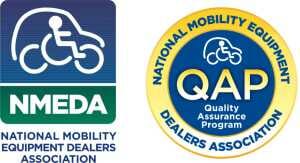Whether you use a wheelchair or a scooter, whether you need side-entry or rear-entry and other factors influence the decision. Think about your needs and preferences and consult your driving rehabilitation specialist and dealer to make the most appropriate choice.
There are two primary differences of Handicap Van Lifts:
Unoccupied Handicap Van Lifts
If you’re looking for the cheapest lift option, you may be able to use one of the available unoccupied handicap van lifts. The two types—swinging arm-style lifts and platform-style lifts—load and unload a scooter or wheelchair when you’re not sitting in it. They’re easy to use and they’re smaller and lighter than lifts made for occupied mobility devices.
Obviously, this sort of equipment is for people who get in and out of their scooter or wheelchair for vehicle travel. If you need your mobility aid when you get where you’re going, but you can access the van on your own, this may be the best option for you.
Occupied Handicap Van Lifts
If you can’t always get out of your scooter or wheelchair van for travel, Occupied handicap van lifts that only work for unoccupied devices aren’t going to cut it. You need something that can safely elevate and lower you while seated. There are several types of occupied lifts that do just that.
Under-vehicle lifts attach outside the van, so they don’t take up any interior room. Single-post split platform lifts are relatively small and well-suited to smaller mobility devices. They permit easy access to the passenger door when stowed. Dual-post split platform lifts are similar but larger. Standard dual-post lifts have sturdier platforms and two hydraulic arms well-suited to the largest and heaviest wheelchairs. This equipment is strong and dependable. It does block access to the door where it’s installed when stowed, and it sometimes prevents seats in front of it from reclining or sliding back. However, in many instances, there is no safe substitute.




